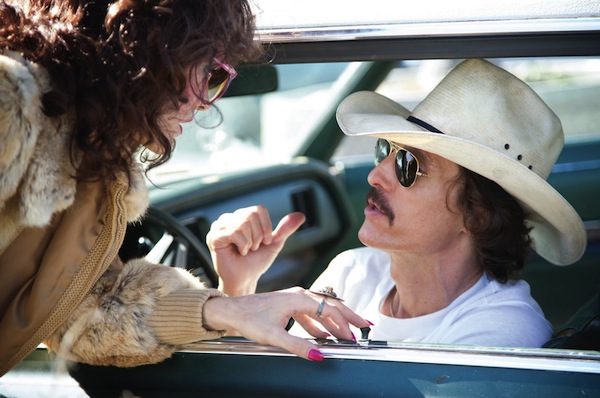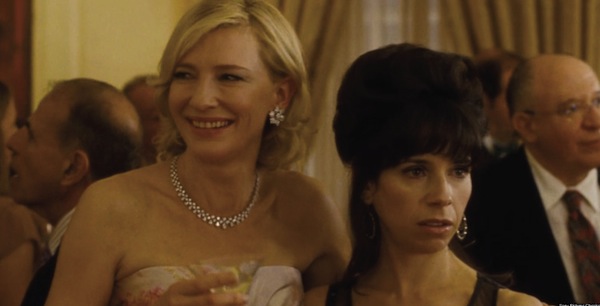Is Your Structure Oscar Worthy?
By Jacob Krueger
[divider type=”thin” full_width=”no” width=”1/1″ el_position=”first last”]
As writers, we all fantasize about writing an Academy Award Winning screenplay. We all have visions of ourselves walking that red carpet, holding that gold statue, thanking the people who inspired and believed in us.
Watching movies like the ones nominated for this year’s Academy Award for Best Original Screenplay, it’s easy to get excited. After years in the wasteland of the remake after remake, it seems like the door may once again be opening for writers of truly original work.
We’re seeing producers seeking out, and putting real money behind, ground breaking original scripts that don’t even pretend to follow the rules. And those producers are being rewarded in huge ways, not only with Oscar Nominations, but also with box office success.
Yeah, it’s a pretty good time to be a writer.
And at the same time, for all the excitement, as you compare your writing to that of the great writers you admire, it’s easy to feel dwarfed by their accomplishments. Can you write something as truthful as Dallas Buyers Club? As well observed as Nebraska? As elegant as Her? As emotionally gripping as Blue Jasmine? Or as downright hilarious as American Hustle? Are there some writers for whom the rules just don’t apply, and others for whom they do? Do you have to wait till you’re Woody Allen or David O. Russell to write the movie that’s really in your heart? Or could your screenplay be the next Dallas Buyers Club, an Academy Award nominated script written by two unknown writers?
Despite their vastly different genres, their formula defying approach, their risk-taking style and non-traditional subject matter, all five of these Oscar Nominees have one thing in common: rock solid structure, that pulls an audience into the world of their characters, and absolutely refuses to let them go. I’m not saying that understanding that structure is going to turn you into Spike Jonze or Bob Nelson overnight. But what it will do is set you free to write a screenplay that captures your own voice, and lets you make your own boldest choices, in a way that pulls your audience in, rather than pushing them away.
What is structure anyway?
If you’ve read more than one book on screenwriting, you’re probably pretty confused about structure. Every screenwriting guru seems to have a different formula, or different set of rules they’re peddling. And none of them make a heck of a lot of sense when you start to think about truly great movies. That’s because structure isn’t a formula you can write down or mimic. It’s not your plot or what happens to your character. And it’s not something you put into your screenplay.
Structure is a way of thinking about your character, about their journey, and about the choices that make them who they are. It’s a tool you use to organize your movie in your own mind, so that each moment lands with its full power: a way of distilling the essence of what you’re trying to say down to the story of a single human being.
Structure isn’t something you plan. It’s something you discover.
Look at an early draft of any of these Academy Award winning films, and you’d probably be pretty shocked at what you saw. Not the polished, Oscar worthy perfection of a “great” writer, but a hot mess of powerfully inspired, but deeply problematic material. In short, something that looks a lot more like your own first draft. Because so many screenwriting teachers have never actually worked as screenwriters, even the biggest and most famous tend to make the same mistake.
Rather than thinking like artists, they think like critics, looking at the final product and trying to reverse engineer what made them great, rather than trying to understand the messy, instinctive and ultimately inspiring process that lead to greatness in the first place. Just like you, these Academy Award nominated writers had to go on a journey to reach their destination. And that didn’t mean figuring it out in advance, and painting by numbers their way through some kind of rigid outline. It meant discovering their story, and their structure, in the only way that writers can: by actually writing it.
What makes us connect to a character?
No matter how much effort you put into constructing the plot of your movie, at the end of the day, if your focus is on plot alone, your movie is going to be dead boring. Read the summary of your favorite movie on imdb.com, and you’ll see what I mean.
Most of us will never get caught up in a hustle with the FBI, the mob, the only honest politician in New Jersey, our girlfriend and our crazy wife. So as much fun as the hustle in American Hustle may be, that’s just the plot of the piece. It’s not the thing that allows us to connect with the character, laugh at the insanity of his every day life, root for him to get out of all this alive, or connect with his predicament. That emotional connection comes from something far deeper, to which everyone can connect to no matter how outrageous the plot—the character’s journey from hustling everyone, to learning what it means to actually care about someone and do the right thing for the first time in his life.
The outrageous plot of American Hustle is just the delivery mechanism for that structure. But it’s not the structure itself. That structure is built upon the character’s reactions to that plot: the life changing choices he makes in relation to the things he most wants, and how those choices change him forever.
That’s what makes the structure universal. Not that it follows some formulaic model, but that it ties into feelings we have all experienced, and our shared desires to come to grips with those feelings, that allow us to see ourselves in characters who are so different than us. You may not be a hustler, but you know what it’s like to be selfish, to feel trapped in your own lies, to realize you have hurt someone you actually care about, and to finally find the courage to do the right thing, even if it costs you your friendship.
Plot is Just the Delivery Mechanism For Structure
Look at the four other Oscar nominees and you’ll see the same phenomena: wildly different plots, and tones and characters, but the same deeply rooted universal experiences.
We may not have ever had a dementia-suffering father who thinks he’s won the lottery like the main character in Nebraska, but we know what it’s like to be trapped by an environment and a family that can never give us what we need. And we’ve all longed to make the choices that would actually make us feel like we mattered.We may never have been a homophobic sex addict, stricken with the AIDS virus, or teamed up with a transgendered drug addict to sell treatments to fellow patients. But we can all be inspired and moved by the relationship between Matthew McConaughey and Jared Leto’s characters in Dallas Buyers Club, and they come to care for one another, and “ride the bull” in the face of a devastating illness.
We may have never been married to a billionaire husband, lost everything when he went to prison, or forced to depend on our struggling younger sister for support. But we know what it’s like to want so desperately to be bigger than we are, like Cate Blanchett’s character in Blue Jasmine, that we end up costing ourselves everything we get caught up in our own lies.
And none of us have ever fallen in love with a computer (hopefully), even if she does have Scarlett Johansson’s mellifluous voice. But we know what it’s like to open ourselves to a forbidden relationship like Joaquin Phoenix’s character in Her, the pain of feeling like the person we most love has moved beyond us, and the strange way the same things that hurt us can ultimately heal us.
Oscar Worthy Structure
Understanding structure begins with understanding character, letting go of your obsession with plot, and instead connecting to your characters emotional needs, and the life changing choices they make as they pursue the things they want most. It means choosing the right delivery mechanism for your story. Rather than the right delivery mechanism for any story. And it means allowing your structure to grow organically from your character’s journey, building around your instincts as a writer, rather than your intellectual plans for your script, and the life changing choices your character makes in each scene, rather than where you’re trying to get them in the end.
So instead of simply predicting this year’s Oscar Winners, like everyone else is doing, think instead about what you can learn from each of the Academy Award nominated scripts. How did each of these writers build an organic structure for their screenplay, so inherently tied to their character and their voice as a writer that it seems like the movie was born with it? How did they shape that structure around each choice the character makes, allowing every plot point to have the most powerful implications possible in relation to the character’s journey. How did they allow their characters to drive each scene, seeking a powerful need at every moment, and making the life changing choices that allow us to connect to them? And most importantly, how did they follow their own instincts as writers, rather than the genre conventions and expectations of the industry, in order to shape the screenplay that only they could write from the first moment their character appeared on the page.
Then, join me on March 19th, when I’ll be breaking down the structure of this year’s Oscar Winning Best Original Screenplay, HER, showing you not only how Spike Jonze organically builds his structure from the very first scene, but also how you can start to discover your own organic structure, shaping the raw creativity and your voice as a writer into a script that demands the attention of your audience and will not let them go.








